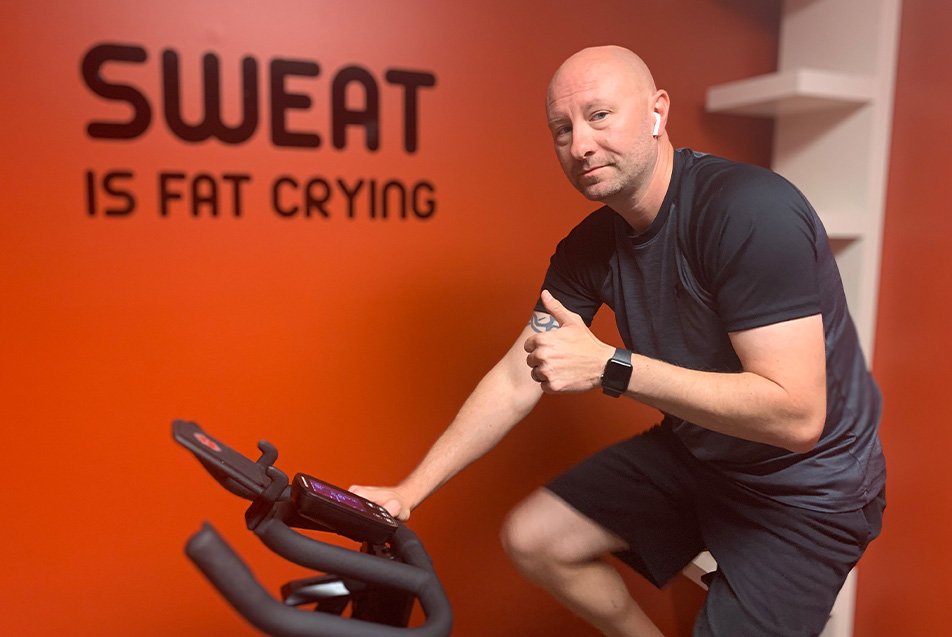
For those with a diabetes diagnosis, the role of glucose monitoring is a familiar one. But what insights can we gain by using this surveillance as a proactive tool for determining well-being modifications? When Chad Shirar, director, Enterprise Diabetes Strategy, Parkview Health, learned of negative changes to his own hemoglobin A1C numbers (a marker for diabetes), he set out to tap into the technology that could provide the insight he needed to get back on track. He decided to wear a continuous glucose monitor (CGM) for 14 days. Chad used these readings to make adjustments to his diet and lifestyle habits so that he could maintain his own health and hopefully gain experience that enabled him to have a positive impact on the health of others. We asked him to share more.
What inspired you to start monitoring your glucose?
As a young person who takes a proactive approach to managing my health, I take pride in having an awareness of how my lifestyle and behaviors can maximize my health and well-being so that I can live a long, fruitful life. After going through many unexpected life transitions in the past two years, I believed I was being cognizant of my daily health choices in an effort to keep any risks at bay, but through those life transitions, I also skipped two years of my annual check-ups. I figured everything was status quo.
In early 2019, I met with a new primary care physician, and learned that my hemoglobin A1C had creeped up to 5.8, which is the low-end range for those with prediabetes. I had also gained about 5% of my body weight, not realizing this was weighing me down more than I thought.
I kept a 30-day food log, and realized I was eating about 20% more than my calorie intake estimates, and my carbohydrate consumption was higher than my internal estimates. For the next 90 days, I sustained my exercise regimen, sleep habits, other self-care activities, and kept a food log, with a goal of reverting back to my previous eating habits. After those 90 days, I reduced my A1C back to normal range.
After learning more about the technology options regarding monitoring blood glucose, I got a continuous glucose monitor (CGM) in mid-2019 to see how my blood glucose levels responded to various foods, sleep patterns, stress and different forms of exercise. At first, I simply wanted to “experience” this tool to be better informed about how and when to recommend the use of CGMs to our community.
What technology did you use?
I used the FreeStyle Libre 14-day monitor, along with the FreeStyle LibrebLink app, using my iPhone XR as a scanner to automatically upload my results.
What insights were you hoping to gain?
If I ate large portions or various combinations of carbohydrates and/or I changed my exercise routine, I wanted to see how those variations would impact my blood sugar level. Since I don’t have diabetes, I expected to see little variation or changes in my blood glucose. I was surprised to see how much 1-2 extra bites of food or a different combination of foods impacts the rise in blood sugar levels.
What did you track and how?
I tracked and trended my glucose levels, along with the included features available via the app: food intake and exercise, along with manually tracking my stress levels and perceived hunger and fullness.
What were you surprised to learn?
I was surprised to learn how much my blood sugar spikes when I have a carbohydrate alone vs. when I eat carbohydrates with a protein or fat. When I included protein and/or fat, not only did my blood sugars not rise as high, the time it took to rise was much slower. Also, the quantity of foods makes such a big impact on blood sugar and energy levels. For me, just an extra bite or two made a significant difference in how my blood sugar increased, by 10-20 points. I learned that when I do heavy, intense resistance training, my blood sugars drop more quickly than running or sustained cardiovascular exercise, and they stay lower for a longer period of time.
What were some key takeaways?
Being intentional, not only about the quality and quantity of food, but also subjective hunger and fullness, helped me pause before I consumed food. In doing so, my energy and cognition were improved. I noticed more deep sleep, less irritability (my wife and kids were pleased), and more eagerness to push myself harder during my workouts.
Based on your results, did you change anything about your lifestyle?
I further reduced my consumption of the three whites (processed sugar, flour, and salt) from moderate to very rare, although I rarely consumed these prior to wearing the CGM. I feel more knowledgeable about how my body responds to various stimuli, particularly food and exercise. I also tend to go to sleep about 30-60 minutes earlier than I did before, which really sets the tone for the next day.
Who makes a good candidate for continuous glucose monitoring?
While there are not consistent guidelines from national agencies on use of CGMs, those who might benefit from wearing a device are those who have learned they are at moderate to high risk for diabetes or those who have been recommended to do so by their healthcare provider. If a person is interested in wearing a CGM, they should discuss it with their physician.



